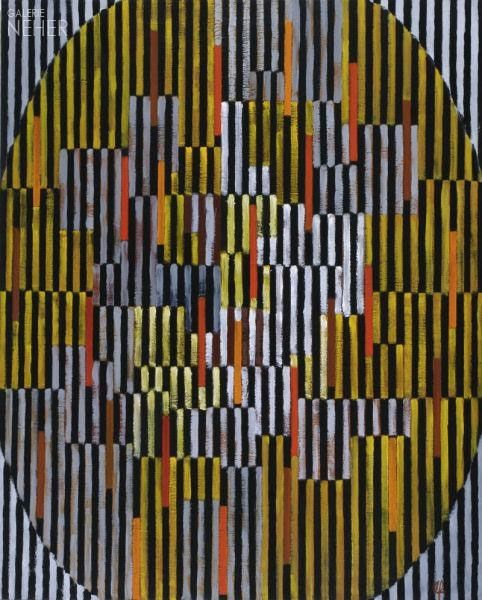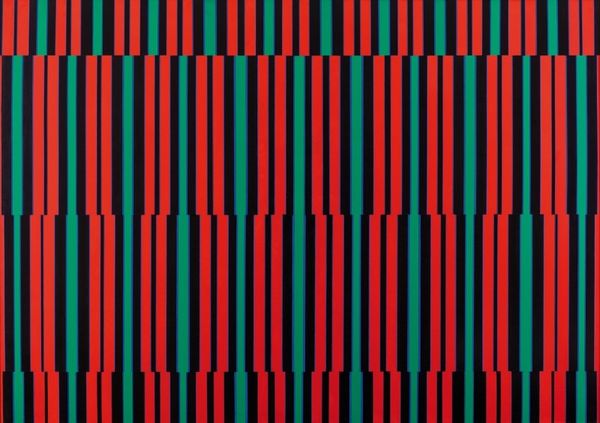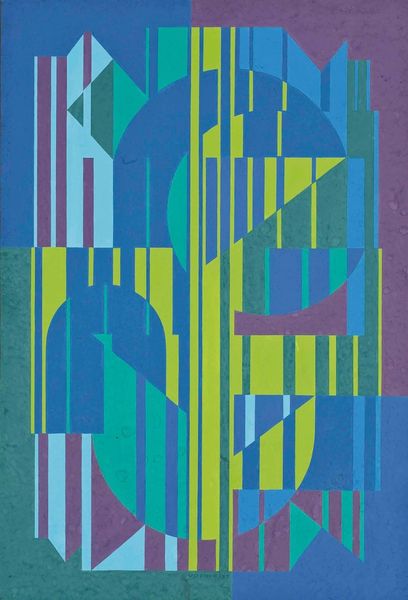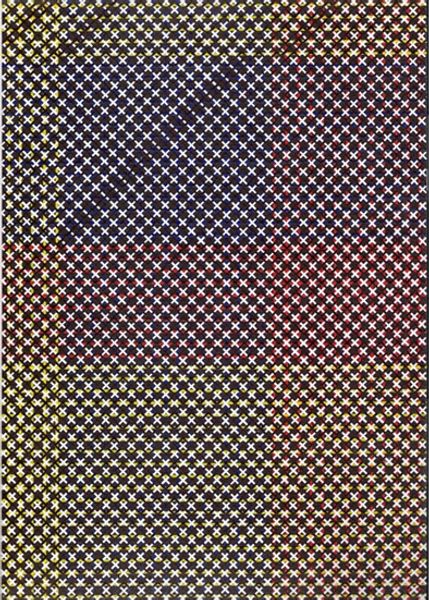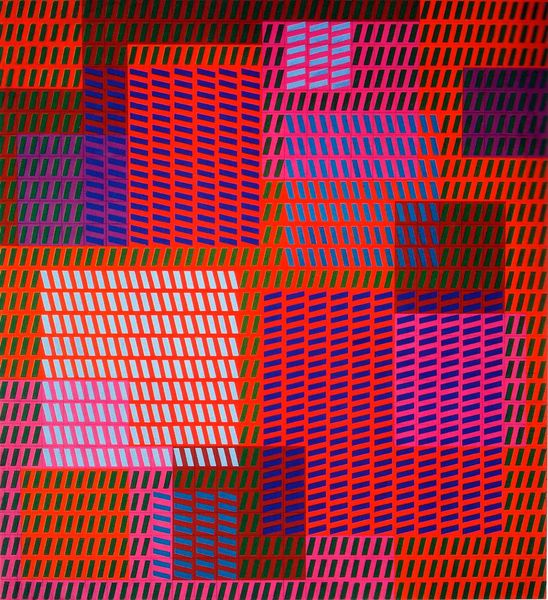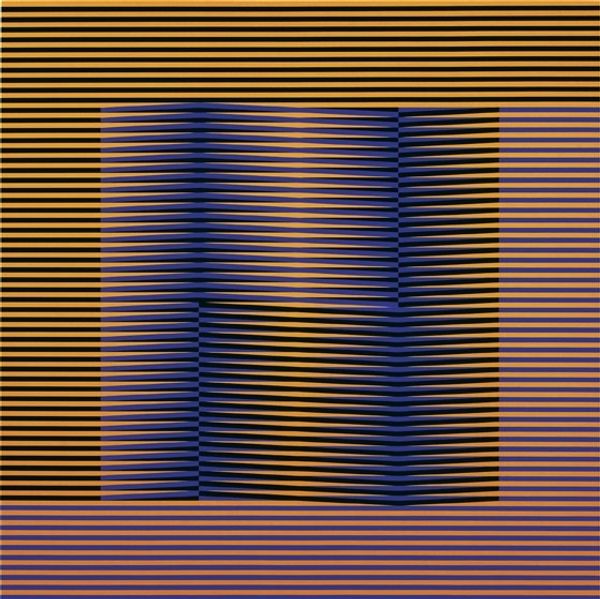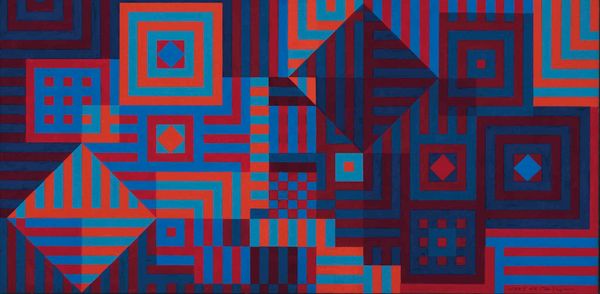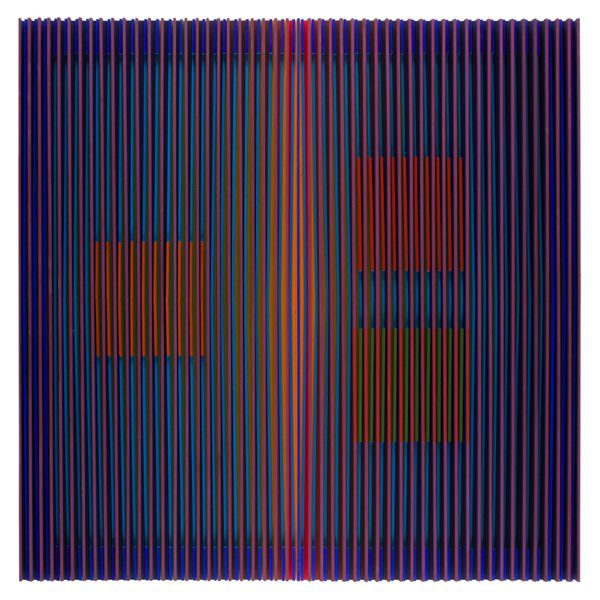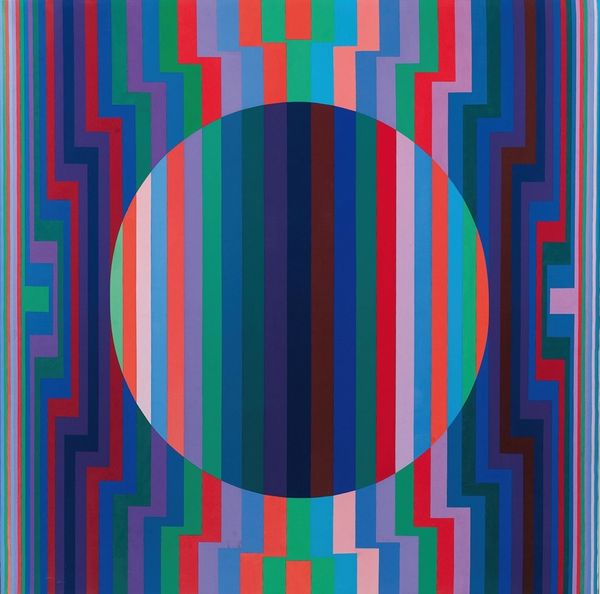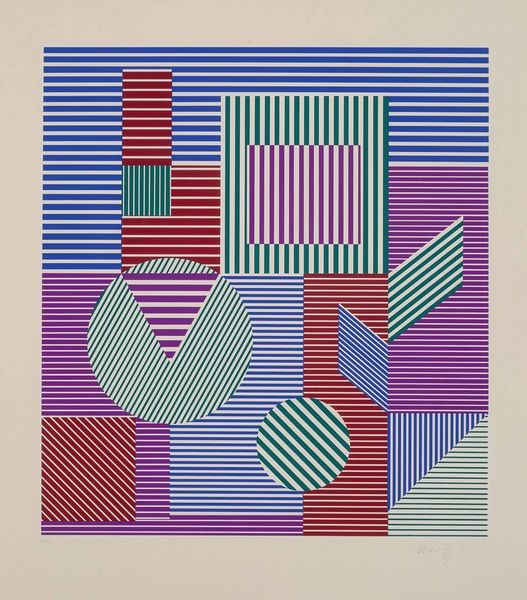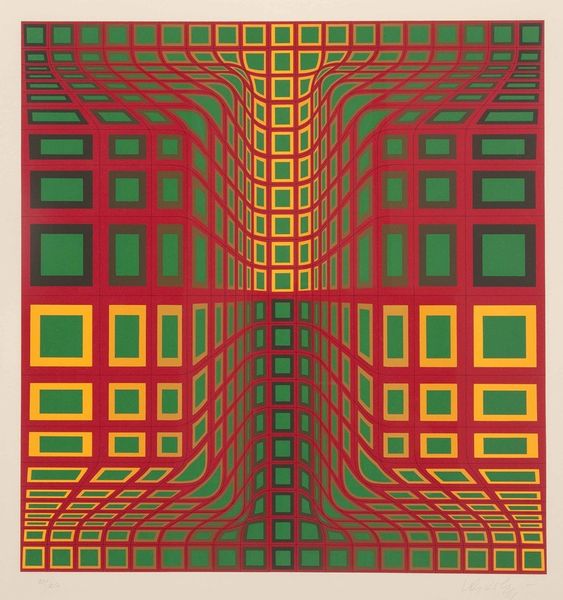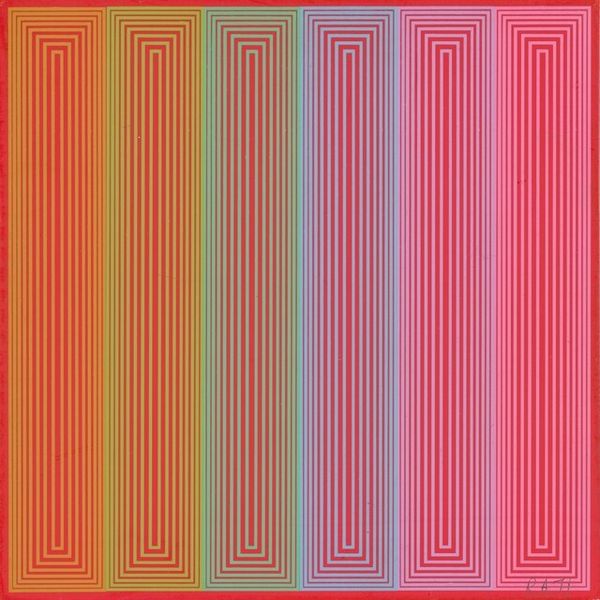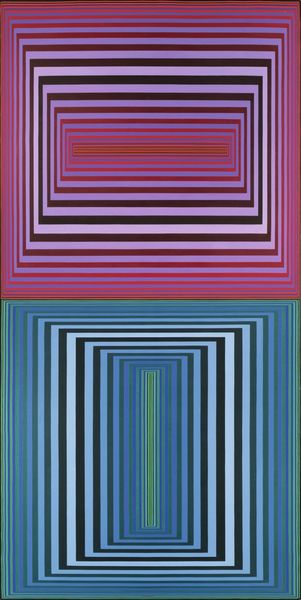
acrylic-paint
#
random pattern
#
op-art
#
colour-field-painting
#
acrylic-paint
#
abstract
#
geometric pattern
#
abstract pattern
#
minimal pattern
#
organic pattern
#
geometric
#
repetition of pattern
#
vertical pattern
#
abstraction
#
pattern repetition
#
combined pattern
#
hard-edge-painting
#
repetitive pattern
Copyright: Modern Artists: Artvee
Editor: This is *Abstract Composition*, an acrylic on canvas piece, likely by Victor Vasarely. The red and green stripes create this vibrant optical illusion, almost like a stack of geometric forms trying to break free. How can we dive a bit deeper? Curator: It's fascinating how Vasarely uses industrial materials, acrylic paints, to disrupt traditional hierarchies between the art object and mass production. Think about the repetitive process, almost a factory-like application of paint. How does this reflect the socio-economic context of the time? Editor: It definitely feels… mechanical, in a way. So the material choice and the hard-edge style aren't just aesthetic; they're speaking to industrialization? Curator: Precisely! The smooth, flawless surface achieved with acrylic challenges the hand of the artist, obscuring the labor involved. How might the clean lines and repetitive stripes influence our perception of value? Editor: It kind of democratizes the image, doesn't it? Makes it feel less precious, almost reproducible. Were his contemporaries doing something similar in terms of accessible, "low" materials? Curator: Consider the Pop Art movement, which also embraced consumer culture and challenged conventional art materials. What other parallels might we find? Editor: Well, they're both reflections on post-war culture. But where Pop Art uses recognizable imagery, Vasarely relies on pure abstraction, pushing the industrial process itself to the forefront. It's more about *how* it's made, not *what* is depicted. Curator: Exactly. The lack of traditional brushwork forces us to consider the means of production, consumption, and ultimately, the constructed nature of art itself. Editor: This has opened my eyes, seeing how Vasarely elevates these commonplace materials into thought-provoking critiques of the industrial world. Curator: Indeed. And by understanding the materiality and processes behind *Abstract Composition*, we appreciate how Vasarely's work contributes to a larger discussion of art, labor, and societal structures.
Comments
No comments
Be the first to comment and join the conversation on the ultimate creative platform.
